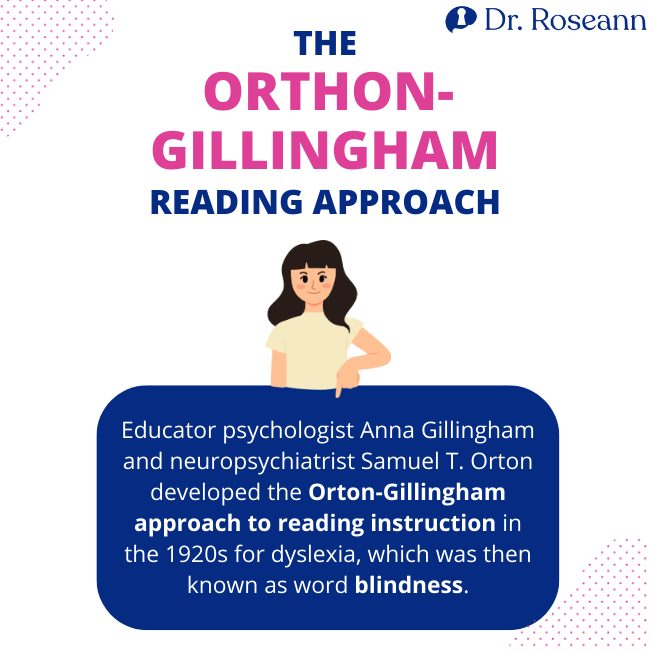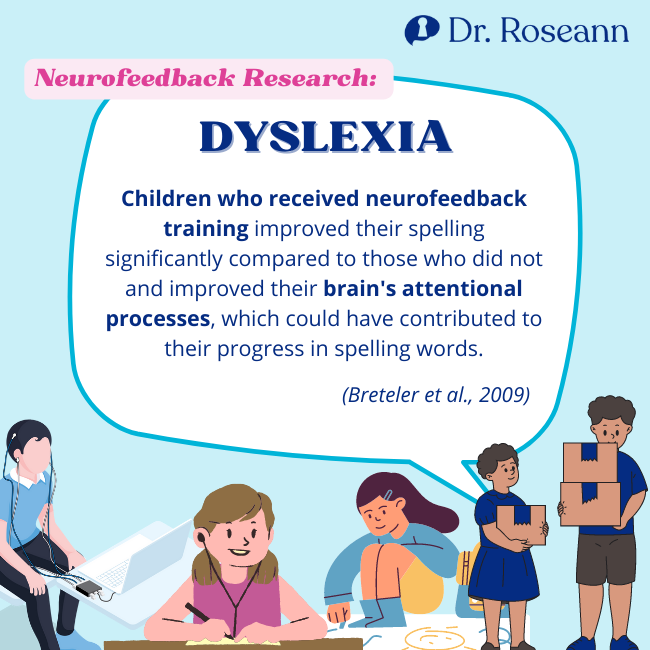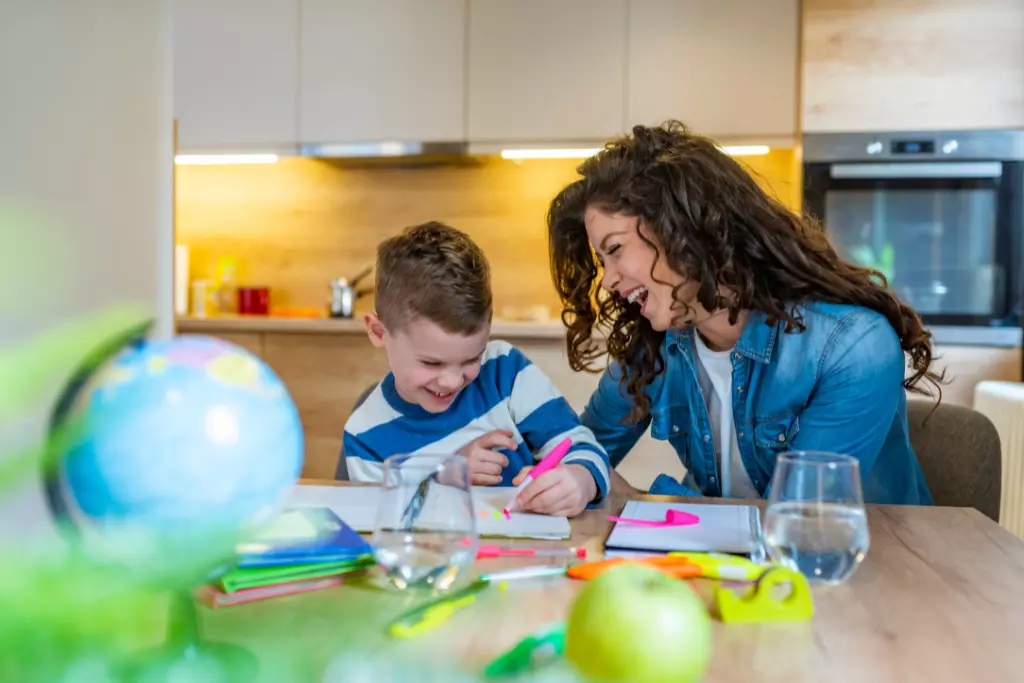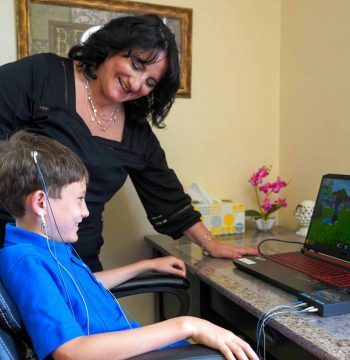Although dyslexia is getting prevalent, it's often misunderstood and misdiagnosed. Most still believe it is a visual problem when it is a language-based disorder with a problem in the brain in hearing or interpreting the sounds (phonemes) accurately.
It is an auditory processing or phonological processing problem. If they can’t accurately identify the phonemes, they can’t map the sounds to the letters (graphemes) or identify and sound out letters, word parts, and words.
Reading fluency and automaticity are often lacking in children with dyslexia. In other words, children with dyslexia often can read but do so slowly and lack accuracy. However, it is possible to change the direction of a child with dyslexia by identifying and treating their specific phonetic issues early.
Dyslexic children are emotionally affected if parents wait for their failure before addressing their learning disorders. The overarching learning disability of dyslexia results in difficulties in both oral and written language, resulting in diverse symptoms. Dyslexia can affect a child's letter, number, phonics, reading, and writing skills.
Furthermore, dyslexia's impact can change over time. Early intervention and diagnosis can get dyslexics the help they need. Many dyslexics are not identified because they develop coping mechanisms that help them survive but mask the underlying foundational problems. Moreover, their executive functioning difficulties make diagnosing dyslexia more difficult because they are often misdiagnosed as having ADHD.
There is a belief that there are types of dyslexia, but all dyslexics have phonological processing issues. However, the impact and signs of dyslexia differ for each child depending on their assets and deficits.
Dyslexia is always phonological. Therefore, phonological memory, phonological awareness, and rapid language retrieval are the fundamental problems in dyslexic people. These difficulties should and can be specifically addressed.
In dyslexia, letter reversals are common because the human brain does not hear sounds accurately. When a dyslexic child tries to map the letter sound, there is usually a mismatch between them. Dyslexics tend to repeat their errors, a strong indicator of a foundational deficit needing remediation. Parents should ensure their child is diagnosed with dyslexia early to identify all areas where they need help.
Below are some natural treatments for dyslexia. Note that it's essential to consult with a mental health professional or a reading specialist to obtain the appropriate treatment for this condition and other developmental disorders.
The Orton-Gillingham Reading Approach
Educator psychologist Anna Gillingham and neuropsychiatrist Samuel T. Orton developed the Orton-Gillingham approach to reading instruction in the 1920s for dyslexia, which was then known as word blindness.

This approach is still the “gold standard” in dyslexia reading instruction. When administered correctly and with the recommended frequency of four to five times a week, meta-analysis research shows that it gets dyslexic readings within a normal range 82% of the time (Ritchey & Goeke, 2006).
Their approach to teaching combines auditory, visual, and kinesthetic teaching methods with direct, multisensory teaching strategies. Here, students learn language skills through the five senses: ears, mouths, eyes, and hands.
Students get to listen, speak, see, and write, respectively. Students listen to the word's sounds while writing letters during this process. They also have to say the sounds and names of the letters as they go.
Students with dyslexia can improve their reading skills and writing scores through the Orton-Gillingham approach. Dyslexic students can use this method to overcome their literacy struggles.
Students learn phonics sequentially using multisensory tools while building more self-confidence, particularly in writing, reading, and speaking. Educators are empowered to develop a structured, individualized, multisensory plan using the Orton-Gillingham teaching vocabulary and reading approach.
The Barton Reading Program
Barton Reading is a well-known and effective program to help individuals with dyslexia overcome their writing and reading difficulties. Developed by Susan Barton, it is a structured, multi-sensory approach that targets the specific learning needs of individuals with dyslexia.
Based on the Orton-Gillingham approach, this program combines systematic, structured, and multi-sensory techniques to teach reading and spelling in a way that accommodates the unique learning styles of dyslexic individuals.
To meet the specific needs of each learner, a thorough assessment is conducted at the beginning to identify areas of difficulty. Then, the instruction is adapted accordingly. Barton Reading follows a carefully designed sequence of skills and concepts, building on previously learned material. This cumulative approach reinforces learning and helps learners establish a strong foundation.
The program also engages multiple senses, incorporating visual, auditory, and kinesthetic elements. This multi-sensory approach helps dyslexic individuals process information more effectively and enhances memory retention.
Barton Reading provides direct and explicit instruction, breaking down complex reading and spelling rules into manageable steps. This approach is particularly beneficial for learners struggling with phonological and phonemic awareness.
As the program focuses on decoding (reading) and encoding (spelling) skills, learners are taught phonics rules and strategies to decode unfamiliar words and spell words correctly. Regular repetition and review are integrated into the program to reinforce learning and ensure mastery of essential concepts.
What Does Dyslexia Reading Instruction Look Like?
The Orton-Gillingham approach to a child's learning involves a step-by-step process. The first part of any dyslexia reading instruction is properly identifying the areas of weakness. A thorough dyslexia evaluation should involve testing all the sounds and sound combinations in English and whether the child or teen can identify letters, parts, or words. As well as a comprehensive reading comprehension evaluation.
O-G involves very ordered and sequential instruction. The instruction includes multisensory reading that taps into the strengths of the dyslexic brain. O-G teaches children the sounds of speech and letters while finding the best way to encourage them to advance and pass each level of small, manageable tasks. The approach makes learning fun while teaching kids essential skills in the process.
The Orton-Gillingham approach uses explicit, direct, sequential, systematic, and multisensory instruction to teach reading. Nothing is assumed, and everything is taught explicitly. I often call it the “Bently” of reading programs because it is comprehensive.
You must be remediated at one level to go on to the next. Otherwise, one’s foundation is poor, which sets OG-based reading instruction apart from typical “slapped together” or electric school programs. The research shows us that OG-based reading instruction works for all students, particularly those with dyslexia.
Students learn how and why to use phonological strategies with the Orton-Gillingham method. To master decoding and encoding individual words, students practice seeing, saying, hearing, and writing letters in a systematic and structured manner.
Using the Orton-Gillingham approach, students learn to read through sight, sound, touch, and movement, which is the key that unlocks learning for dyslexics. Students with dyslexia who lack essential phonemic awareness benefit from this approach.
William's Story
I remember William, a teenager who studied in an American school in Europe, whose condition was misidentified. His European school suggested to his American parents that he should return to the US for reading help because he needed OG instruction. But when he returned to the US, they told him he had reading problems because he studied in another country and was a “non-English speaker,” which wasn’t the truth.
As a kid with dyslexia, his mother got him tested three times, and by then, he had lost all hope of getting into college. When they consulted with me for testing and dyslexia treatment, I diagnosed him with dyslexia and helped them get an Orton-Gillingham reading program at school.
After getting proper instruction and extra time with his schoolwork, he could read accurately and fluently in a short amount of time. The Orton-Gillingham teaching method became the key for him to go to college and become a teacher. His mom was so happy we addressed the issue and helped him succeed in a path he couldn’t follow without literacy skills.
Neurofeedback as a Treatment for Dyslexia
EEG Neurotherapy or Neurofeedback Training targets dyslexia symptoms at their source, the brain. For example, someone with specific learning disabilities such as dyslexia has auditory processing and poor executive functioning. Neurofeedback can address these directly by improving functioning in those structures and brain communication. Dyslexics are often very smart but struggle with slow processing, and neurofeedback has been proven to improve processing speed.
It can also address the secondary symptoms of dyslexia, such as emotional and social problems and low self-esteem, by calming the brain and regulating the frontal lobes. In terms of mental health and functioning, neurofeedback can produce lasting change.
Researchers have found structural differences in the left side of the brain in individuals with dyslexia using brain imaging and QEEGs (Raschle et al., 2011). Language is primarily represented and comprehended in certain hemispheres of the brain, particularly the left part,
which is highly involved in language.
Children who received neurofeedback training improved their spelling significantly compared to those who did not. There's also an improvement in their brain controlling and attentional processes, which could have contributed to their progress in spelling words (Breteler et al., 2009).

Different learning problems can cause attention issues in individuals of all ages. A strong neuroscience research base supports neurofeedback's clinical success worldwide. People with brain-based reading disabilities, like dyslexia, can alter how their brains work through neurofeedback and obtain a lasting, positive effect.
PEMF as Dyslexia Treatment at Home
People often consider dyslexia a lack of intelligence, but that isn't the case. Dyslexia is caused by a malfunction in the brain's ability to process graphic symbols, which is the root cause of the problem.
In addition, dyslexia is often misunderstood to be associated with vision problems though it is a linguistic issue, not a visual one. PEMF or Pulsed Electromagnetic Field therapy can benefit children with dyslexia because it can help improve one's cognitive functions.
PEMF therapy has been used to treat various neurological conditions, and most patients respond well to the treatment. It makes PEMF a beneficial, non-medication, and non-invasive approach to treating dyslexia for patients of any age.
PEMF therapy helps improve dyslexia by stimulating the brain's electrical activities and enhancing cognitive function. A PEMF therapy works because the body responds well to 0-30 Hz magnetic fields.
Brain cells can be stimulated through the magnetic fields a PEMF device emits. This stimulation allows the brain to function at its best. When used regularly, PEMF can help improve dyslexia.
A PEMF device can be used twice a day or as directed by a clinician for best results though each child may respond differently to the therapy. In addition to helping those with dyslexia, PEMF devices can help treat other neurological conditions, such as Attention Deficit Hyperactivity Disorder.
Many patients with neurological conditions have experienced improvements after using PEMF therapy. Although PEMF therapy is not a known cure for dyslexia, it can be effective if you want to support your child. In addition, many parents have reported that it has significantly impacted their kids' academic skills.
Parent Action Steps:
- Learn and understand dyslexia to gain insights into the condition and its challenges
- Seek professional assessment and diagnosis from a qualified educational psychologist.
- Provide your child with a supportive and understanding environment.
- Engage your child in multi-sensory activities to enhance learning experiences.
- Encourage daily reading practice with your child.
- Implement phonics-based exercises and decoding games
- Consider enrolling your child in structured literacy programs
- Establish consistent daily routines that incorporate designated study time and breaks.
- Explore assistive technology tools that can support dyslexic learners.
- Celebrate your child's efforts and progress.
- Communicate with your child's teachers and school administrators about their dyslexia.
- Advocate for appropriate accommodations at school through an IEP or 504
- Regularly assess your child's progress and adjust strategies as needed.
- Understand that dyslexia treatment is a journey that requires patience and persistence.
- Take our Solutions Matcher to get individualized help for your child
Citations
Breteler, M. H. M., Arns, M., Peters, S., Giepmans, I., & Verhoeven, L. (2009). Improvements in Spelling after QEEG-based Neurofeedback in Dyslexia: A Randomized Controlled Treatment Study. Applied Psychophysiology and Biofeedback, 35(1), 5–11. https://doi.org/10.1007/s10484-009-9105-2
Cancer, A., Vanutelli, M. E., Lucchiari, C., & Antonietti, A. (2021). Using Neurofeedback to Restore Inter-Hemispheric Imbalance: A Study Protocol for Adults With Dyslexia. Frontiers in Psychology, 12. https://doi.org/10.3389/fpsyg.2021.768061
Hug, K., & Röösli, M. (2011). Therapeutic effects of whole-body devices applying pulsed electromagnetic fields (PEMF): A systematic literature review. Bioelectromagnetics, 33(2), 95–105. https://doi.org/10.1002/bem.20703
Raschle, N. M., Chang, M., & Gaab, N. (2011). Structural brain alterations associated with dyslexia predate reading onset. NeuroImage, 57(3), 742–749. https://doi.org/10.1016/j.neuroimage.2010.09.055
Ritchey, K. D., & Goeke, J. L. (2006). Orton-Gillingham and Orton-Gillingham—Based Reading Instruction: A Review of the Literature. The Journal of Special Education, 40(3), 171–183. https://doi.org/10.1177/00224669060400030501
Always remember… “Calm Brain, Happy Family™”
Are you looking for SOLUTIONS for your struggling child or teen?
Dr. Roseann and her team are all about solutions, so you are in the right place!
There are 3 ways to work with Dr. Roseann:
You can get her books for parents and professionals, including: It’s Gonna Be OK™: Proven Ways to Improve Your Child’s Mental Health, Teletherapy Toolkit™ and Brain Under Attack: A Resource For Parents and Caregivers of Children With PANS, PANDAS, and Autoimmune Encephalopathy.
If you are a business or organization that needs proactive guidance to support employee mental health or an organization looking for a brand representative, check out Dr. Roseann’s media page and professional speaking page to see how we can work together.
Dr. Roseann is a Children’s Mental Health Expert and Therapist who has been featured in/on hundreds of media outlets including, CBS, NBC, FOX News, PIX11 NYC, The New York Times, The Washington Post,, Business Insider, USA Today, CNET, Marth Stewart, and PARENTS. FORBES called her, “A thought leader in children’s mental health.”

She is the founder and director of The Global Institute of Children’s Mental Health and Dr. Roseann Capanna-Hodge. Dr. Roseann is a Board Certified Neurofeedback (BCN) Practitioner, a Board Member of the Northeast Region Biofeedback Society (NRBS), Certified Integrative Medicine Mental Health Provider (CMHIMP) and an Amen Clinic Certified Brain Health Coach. She is also a member of The International Lyme Disease and Associated Disease Society (ILADS), The American Psychological Association (APA), Anxiety and Depression Association of America (ADAA) National Association of School Psychologists (NASP), International OCD Foundation (IOCDF) International Society for Neurofeedback and Research (ISNR) and The Association of Applied Psychophysiology and Biofeedback (AAPB).
© Roseann-Capanna-Hodge, LLC 2023
Disclaimer: This article is not intended to give health advice and it is recommended to consult with a physician before beginning any new wellness regime. *The effectiveness of diagnosis and treatment vary by patient and condition. Dr. Roseann Capanna-Hodge, LLC does not guarantee certain results.













